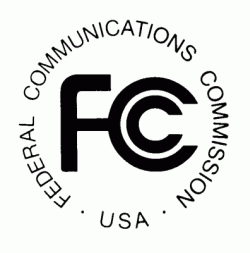
In the Fact Sheet, the Commission explains that the record in the proceeding, which consists of the record of the 2010 quadrennial review as supplemented by comments received in response to the Further Notice of Proposed Rule Making (FNPRM) that commenced the 2014 quadrennial review, is sufficient to conclude that traditional media outlets remain “of vital importance to their local communities.” Based on this finding, it concludes that continued regulation of the industry is in the public interest. The Fact Sheet goes on to detail how each of the Commission’s existing media ownership rules will be “tweaked”, but otherwise reaffirmed, save the rules affecting television ownership, which will be tightened.
The Fact Sheet summarizes the proposed rules as follows:
- The local television ownership rule, which prohibits common ownership of two full-power television stations in a market with fewer than eight independent television owners, and the common ownership of two Top-Four television stations in any market, will be left intact other than to update it to reflect the transition to digital television. However, the new rules will expand the prohibition against ownership of two Top-Four stations in the same market to apply to “network affiliation swaps, to prevent broadcasters from evading” the local ownership limits.
- The controversial rule that the Commission adopted in 2014 treating TV Joint Sales Agreements (JSAs) as ownership interests (which the Third Circuit recently invalidated) will be reinstated, although existing JSAs will be granted some type of grandfathering relief, consistent with what the Fact Sheet terms Congress’ “guidance” on that issue. The Fact Sheet does not provide any details, nor address whether such grandfathered JSAs will be assignable.
- TV Shared Services Agreements (SSAs) will now have to be placed in television stations’ online public inspection files. The agreements subject to this provision will be numerous, as SSAs are broadly defined by the Fact Sheet as “[a]ny agreement in which (1) a station provides another station, not commonly owned, with any station-related services, including administrative, technical, sales, and/or programming support; or (2) stations not commonly owned collaborate to provide station-related services, including administrative, technical, sales and/or programming support.”
- The existing radio ownership rules will remain unchanged except for some “minor clarifications to assist the Media Bureau in processing license assignment/transfer applications.” An example provided of such a clarification is addressing how to define radio markets in Puerto Rico.
- While the FCC tentatively concluded in the 2014 FNPRM that the Radio/TV Cross-Ownership prohibition is no longer needed for competition or localism purposes, and that the record indicated elimination of the prohibition would not adversely impact ownership diversity, the Fact Sheet, in keeping with its pro-regulation theme, reverses course and states the rule will be retained unchanged except for an update to reflect the transition to digital television.
- Similarly, while the FCC suggested in the 2014 FNPRM that radio should be eliminated from the Newspaper/Broadcast Cross-Ownership prohibition, the Fact Sheet indicates that the current rule will be retained, but updated for digital television, and will now incorporate a failing or failed station/newspaper waiver standard.
- The Dual Network Rule, which prohibits common ownership of ABC, CBS, NBC or Fox, will remain unchanged.
- The Eligible Entity Standard, which determines which entities are eligible for favored regulatory treatment under the multiple ownership rules, was also affected by the recent Third Circuit decision. The court ordered the FCC to collaborate with advocacy groups on a timeline to adopt a new standard and urged the Commission to engage with those groups on the substance of that standard as well. The Fact Sheet indicates that the FCC will simply reinstate the prior revenue-based standard, rejecting the advocacy groups’ proposals to use a race or gender-based standard.
While today’s news is hardly surprising, it is disappointing for those waiting for the FCC to address (or even acknowledge) competitive realities that weren’t dreamed of when the FCC completed the 2006 quadrennial review. For the most part, the Fact Sheet tracks the rules proposed in the even-further-out-of-date-now-than-it-was-then March 2014 FNPRM. To the extent it varies from the FNPRM, it does so by rejecting any deregulatory proposals, increasing the regulatory burden on broadcasters beyond what was contemplated in 2014.
It wouldn’t be the first time the FCC has had to proceed on an out-of-date record, this time under pressure from the Third Circuit to so something (anything?) before the year is out. However, expanding TV regulations beyond what the FCC felt could be justified a decade ago will take more than wishful thinking to defend in court, and the decision to go down that path without seeking further comments on the specific new proposals means that the regulatory uncertainty for broadcasters will continue until the courts have had a chance to weigh in. It is therefore becoming increasingly clear that it is judicial review, and not the FCC’s quadrennial review, that will determine the rules under which 21st Century broadcasters will operate.




